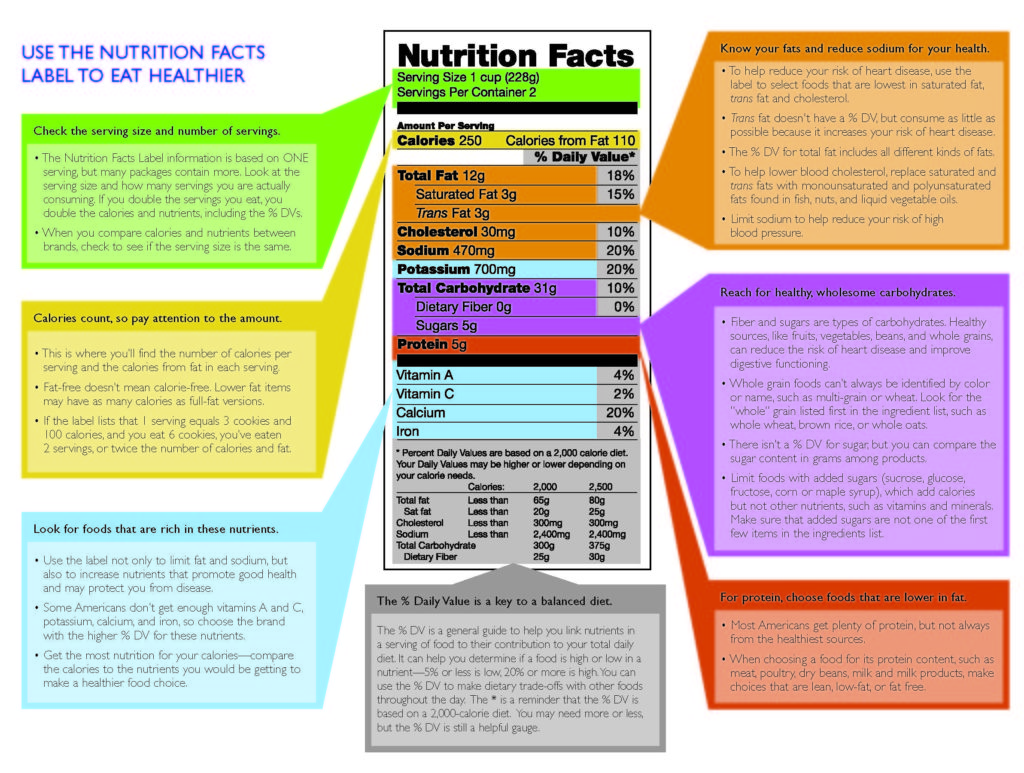Every five years, the U.S. government updates the Dietary Guidelines for Americans. These guidelines represent the latest research on what a healthy diet should include to meet our nutritional needs. The recommendations in the Dietary Guidelines form the basis for MyPlate, the National School Lunch and Breakfast Programs, WIC food packages, and other nutrition programs across the country. The newest edition of the Dietary Guidelines was released earlier this month. Much of their recommendations were similar to the previous version with a few key differences.
More Focus on The Bigger Picture
In the past, the Guidelines spoke about individual nutrients and food groups. The new Guidelines take a broader view of overall eating patterns. They remind us that all food and beverage choices matter – each meal, each day, each week, and for a lifetime. This may sound strict, but in reality, it should inspire you to make small improvements over time to achieve a healthy eating pattern.
Keep a lookout for the hashtag #MyPlateMyWins on social media for tips on small changes that can help you build your own personal healthy eating style.
Put It Into Practice: Try to eat more like MyPlate at every meal and worry less about all the milligrams, cups, ounces, etc. (with three important exceptions below!)
Limit Added Sugars, Saturated Fat, and Sodium
With these nutrients, we still need to be aware of the actual numbers we consume.
For the first time, the Guidelines recommend limiting added sugar to less than 10% of calories. For the 2,000 calorie diet (the reference level for Daily Values on our Nutrition Facts labels), this is less than 200 calories or about 12 ½ teaspoons of added sugar a day. For comparison’s sake, a 12-ounce can of soda contains just under 8 teaspoons of added sugar. An average American gets about 13% of their calories from added sugar.
*Note* Currently, the Nutrition Facts label does not list added sugar separately from “sugars.” However, this change is coming in the next few years. Until then, you’ll need to read the ingredient list to look for added sugar. If sugar is listed in the first 3-5 ingredients or appears multiple times, it is probably too high in added sugar.
As in the previous version, the new Guidelines recommend limiting saturated fat to less than 10% of calories. An average American gets about 11% of their calories from saturated fat, mainly from foods containing cheese or meat. It’s better to replace saturated fats (ex: butter) with unsaturated fats (olive or canola oil) than with refined carbohydrates (low-fat cookies).
The new Guidelines recommend limiting sodium to 2,300 milligrams (mg) per day for everyone. An average American gets about 3,440 mg per day, with adult men a little above that and adult women a little below that. Most of the sodium we eat comes from processed food, not from the salt shaker on the table or naturally occurring in foods.
Put It Into Practice: Make a habit of reading ingredient lists and Nutrition Facts labels. Drink water instead of sugar-sweetened beverages. Switch to the best fats for cooking. Cook from scratch more often to limit sodium.
Recommended Healthy Eating Patterns
As I shared on Facebook this weekend, the new Guidelines presented three healthy eating patterns that provide adequate nutrients within calorie needs while limiting added sugar, saturated fats, and sodium.
- Healthy U.S.-Style Eating Pattern – based on typical American diet with more nutrient-dense choices in better portions.
- Healthy Mediterranean-Style Eating Pattern – adapted from the popular traditional Mediterranean Diet. This eating pattern has more fruits and seafood, but less dairy than the U.S.-Style pattern.
- Healthy Vegetarian Eating Pattern – similar to the Healthy U.S.-style pattern, but with more plant-based protein foods in place of animal proteins.
Put It Into Practice: Think about MyPlate when meal planning. Try Mediterranean-inspired recipes. Eat more seafood! Add a meatless meal once a week (or more).
The new Dietary Guidelines are very similar to previous editions and should be familiar to anyone in our program. They should be the starting point of your family’s eating habits, but feel free to customize to your taste and cultural preferences. Focus on nutrient-dense choices and limit foods with high levels of added sugar, saturated fat, and/or sodium for occasional treats. Here is a nice summary of the Top 10 Things You Need to Know from health.gov as well.
With all the media attention on the new Guidelines, I’m sure there are lots of questions. What do you want to know more about? Ask away in the comments!


